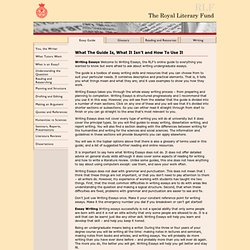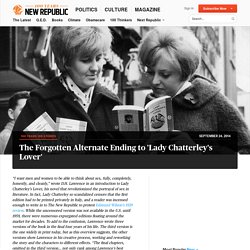

Time and the Experience of the Gothic. How to write paragraphs — Advice for authoring a PhD or academic book. In English the core building blocks of any intellectual or research argument are paragraphs.

Each paragraphs should be a single unit of thought, a discrete package of ideas composed of closely linked sentences. The most generally applicable sequence to follow is — Topic, Body, Tokens, Wrap. The opening ‘topic’ sentence alerts readers to a change of subject and focus, and cues readers (in ‘signpost’ mode) about what the paragraph covers. It should never link backwards to material that came before (linkages are instead always made forward in ‘wrap’ sentences). So be wary of starting paragraphs with linking words (such as ‘However’, ‘Never the less’, ‘Furthermore’), lest they lead you into looking back.
Rational, skimming readers do not treat all parts of paragraphs in the same way. It follows that the beginning and endings of paragraphs should always be the most carefully written materials. Six common paragraph problems Six things most commonly go wrong in writing paragraphs: 6.
Post graduate. Courses. Open Modernisms Project. Open Modernisms Recently there have been discussions among Modernist Studies Association members about the lack of an ideal anthology of modernist primary sources for use in the classroom.

While many of the texts we frequently teach are now out of copyright and are available online through Project Gutenberg, Google Books, and other digitisation initiatives, there remains no systematic way for lecturers to gather these materials, ensure that they are reliable texts, and distribute them to students. Open Modernisms is a collaborative effort on the part of modernist scholars to make out-of-copyright texts available for teaching. The freely available resource will allow lecturers and students to access and curate a customizable selection of essays and manifestos by modernists about modernism.
The resource will focus first on “primary secondary” materials — works like Woolf’s “Modern Fiction,” and Pound’s “A Retrospective.” Like this: Like Loading... The Royal Literary Fund. What The Guide Is, What It Isn’t and How To Use It Writing Essays Welcome to Writing Essays, the RLF’s online guide to everything you wanted to know but were afraid to ask about writing undergraduate essays.

The guide is a toolbox of essay writing skills and resources that you can choose from to suit your particular needs. It combines descriptive and practical elements. That is, it tells you what things mean and what they are; and it uses examples to show you how they work. Writing Essays takes you through the whole essay writing process – from preparing and planning to completion. Writing Essays does not cover every type of writing you will do at university but it does cover the principal types. You will see in the topbar options above that there is also a glossary of terms used in this guide; and a list of suggested further reading and online resources. It is important to say here what Writing Essays does not do.
Writing Essays does not deal with grammar and punctuation. Theresa M. Review Second Version of Lady Chatterley's Lover by DH Lawrence. “I want men and women to be able to think about sex, fully, completely, honestly, and cleanly,” wrote D.H.

Lawrence in an introduction to Lady Chatterley’s Lover, his novel that revolutionized the portrayal of sex in literature. In fact, Lady Chatterley so scandalized censors that the first edition had to be printed privately in Italy, and a reader was incensed enough to write in to The New Republic to protest Edmund Wilson’s 1929 review. While the uncensored version was not available in the U.S. until 1959, there were numerous expurgated editions floating around the market for decades. To add to the confusion, Lawrence wrote three versions of the book in the final four years of his life. The third version is the one widely in print today, but as this overview suggests, the other versions show Lawrence in his creative process, working and reworking the story and the characters to different effects. This piece originally appeared in The New Republic on Sept. 16, 1972. Scarr-Hall Memorial Trust - Turn2Us. Student Disability Assistance Fund (formerly British Students Educational Assistance Fund) - Turn2Us.
Diamond Education Grant - Turn2Us. How do writers find their voices? The disembodied voice: Samuel Beckett's Not I.

Photograph: Tristram Kenton The idea that writers can somehow "hear" the voice of their characters is a familiar one, as is the notion that characters seem to write themselves: that the author is merely a kind of conduit for voices that seem to have lives all of their own. However, describing where that voice comes from, what it sounds like and how it feels to experience a character so intimately is a much more difficult – and more fascinating – matter, as a team of Durham University researchers have been discovering at the Edinburgh international book festival. Contributors to the project have already written a series of blogs on those writers who have been able to talk about it, including Hilary Mantel, Virginia Woolf and Charles Dickens. Already our research is uncovering significant and surprising insights into a range of questions: What does inner voice actually "sound" like?